Pets and Animals
Black Beauty: Unveiling the Alluring Pitbull Dog Black
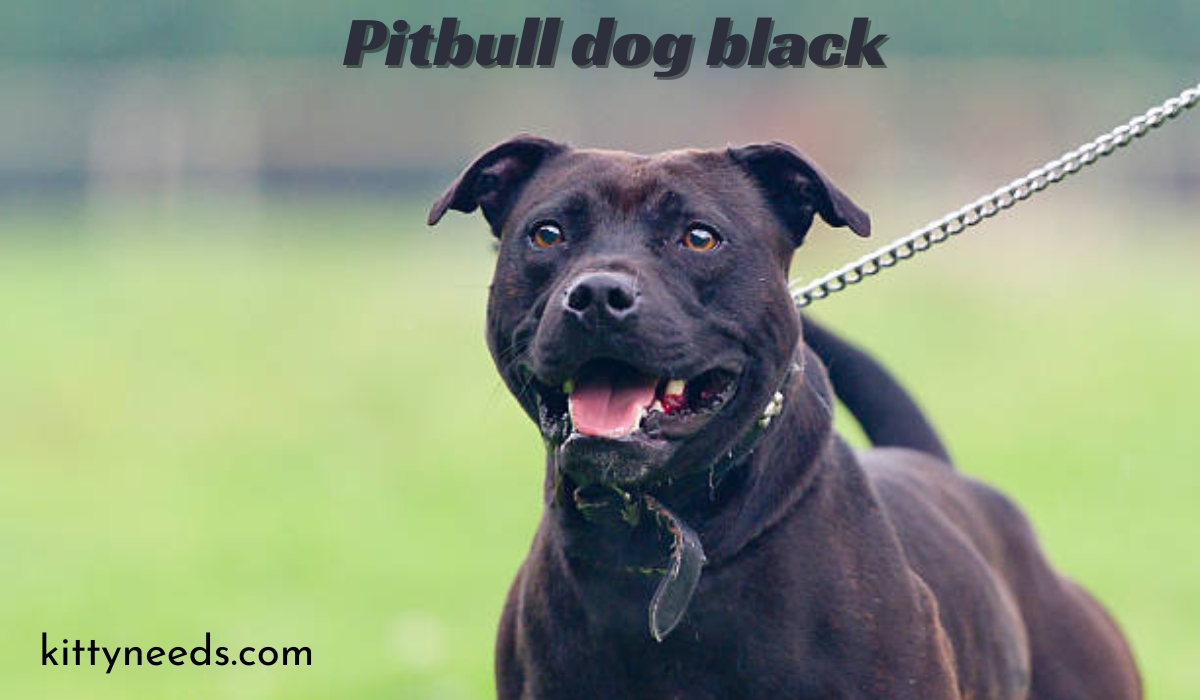
Pitbull Dog Black
Pitbull terriers are an icon in the dog world. Their broad head, muscular build, and enthusiastic tail wags make them irresistible to dog lovers everywhere. However, within the world of this so-called “bully breed,” there exists a rare gem sought by enthusiasts and advocates across the globe – the Black Pitbull. Distinguished not just by its color, but by the mythology that surrounds it, this majestic creature embodies loyalty and resilience. This comprehensive guide dives deep into the world of the Black Pitbull, shedding light on their allure, characteristics, and what it truly means to be a Pitbull parent.
I. The Appeal of the Alluring Black Coat
The Rarity of the Black Fur
Pitbull terriers come in a variety of coat colors, but the solid black coat is considered relatively rare. While coat color in dogs is determined by genetics, solid black is a bit of an anomaly in the Pitbull breed. Genetics play a significant role in determining the likelihood of a dog having a black coat, which is influenced by the genes inherited from its parents.
Understanding Coat Color Genetics
A Black Pitbull has inherited genes that both carry the “black” allele from its parents. These genes are responsible for producing the dark pigment known as eumelanin, which determines the coloration of the fur. However, even within the black coat, the presence of other genes can give rise to small variations, such as a tuxedo pattern, white markings, or even brindle where black is the dominant color.
Mythology and Misconceptions
The darkness of the black coat has been steeped in mythology and, unfortunately, in misconceptions. Sometimes associated with negative symbolism by those who are uninformed, it’s important to recognize that the color of a Pitbull’s coat has no bearing on its temperament. It is merely a genetic trait and one that brings its own unique beauty.
II. Beyond the Black: Exploring Pitbull Temperament
The Loyal Companion
Black Pitbulls are celebrated for more than just their coat color. Their loyalty is often unmatched. When a Pitbull bonds with its human family, it does so with a fierce and enduring devotion. They are known for their protective nature, making them excellent watchdogs.
Debunking Myths
Misunderstandings about the Pitbull breed abound. One of the most pervasive myths is that they are inherently aggressive. This is simply not true. A well-bred and properly socialized Pitbull is loving, gentle, and great with children. Their reputation has been unfairly tarnished, and it’s our responsibility as advocates to dispel these misconceptions and promote the truth about this wonderful breed.
Traits and Characteristics
The temperament of a Pitbull is a product of proper breeding and socialization. Known for their intelligence and determination, they can excel in various environments, from family homes to working roles. Early and ongoing training is essential to ensure that these traits are channeled positively, and the dog is a happy, healthy member of its community.
III. Owning a Black Pitbull: Responsibilities and Joys
Grooming the Black Coat
The solid black coat of a Pitbull is typically short and smooth, which requires minimal grooming. Regular brushing helps keep the coat clean and shiny and can also be a bonding activity between the dog and its owner. Bathing should be done as needed, using a dog-friendly shampoo to keep the skin and coat healthy.
Exercise and Training
Pitbulls are an active breed and require regular exercise to maintain their physical health and mental well-being. Daily walks and playtime are essential, and for those with the time and capability, activities like agility training, fetch, and even swimming can be a great way to bond with your black beauty.
Responsible Ownership and Resources
Finding a responsible breeder or adopting from a shelter is the first step to owning a Black Pitbull. Responsible breeding practices are crucial for maintaining the health and temperament of the breed. Adopting from a shelter not only gives a dog a second chance at a loving home but also supports the important work of rescues in rehabilitating and rehoming Pitbulls.
IV. Living with a Black Pitbull: Real Stories, Real Love
Black Pitbulls in Pop Culture
Pitbulls, including the Black variety, have appeared in numerous forms of pop culture, from film and television to music and art. Sometimes they are depicted as fearsome, but there are just as many examples where they are shown as the loving, loyal dogs that they are. These representations can influence public perception and highlight the positive traits of the breed.
Personal Testimonies and Adoption Successes
Throughout the years, thousands of Pitbulls have found loving homes with devoted owners. Share heartwarming stories of the bonds formed between humans and their Black Pitbulls, showcasing the joy and fulfillment that can come from these relationships.
Celebrating Black Pitbulls
Black Pitbulls are worthy of celebration for their unique qualities and the love they bring to their families. Through advocacy and education, we can ensure that these beautiful animals receive the understanding, respect, and care they deserve.
YOU MAY ALSO LIKE
How To Trim Dog Nails: A Step-by-Step Guide for Painless Pups and Peace of Mind
V. Conclusion
The Black Pitbull is a beautiful creature, not just because of its coat color, but because of the depth of its spirit and the strength of its character. In the choice to become a Pitbull owner, we not only gain a loyal companion but also take on the role of an ambassador for the breed. It is in our hands to represent them with pride and to share their story with the world. To own a Black Pitbull is a privilege, and with that privilege comes a responsibility to them, to our communities, and to future Pitbulls. Each one of them, a unique, beautiful story waiting to be told and shared, each one deserving of love and understanding.
In writing this guide, we hope to have given you valuable insights that will enrich your understanding of the Black Pitbull. Remember, it’s not the coat that makes the dog, but the heart. And the heart of a Black Pitbull is one of the most beautiful you will find. Join the movement to celebrate black beauty in all its forms and to be a voice for those who cannot speak for themselves. Thank you for taking the time to explore the world of the Black Pitbull with us. May your love for this breed continue to grow and inspire others to see the light in their darkness.
Frequently Asked Questions (FAQs) about Black Pitbulls
- Are Black Pitbulls more aggressive than Pitbulls of other colors?
- No, the color of a Pitbull’s coat, including black, has no correlation with its temperament. Aggressiveness is not a trait determined by coat color but rather by factors such as upbringing, training, and socialization.
- Is it harder to adopt a Black Pitbull compared to other colors?
- While there are myths surrounding black dogs in general, which sometimes can make them harder to adopt due to misconceptions, many shelters and rescues work hard to find all Pitbulls loving homes. Their color does not inherently make them harder to adopt.
- Do Black Pitbulls require special grooming?
- Black Pitbulls, like all Pitbulls, have short, smooth coats that require minimal grooming. Regular brushing and occasional baths are sufficient to keep their coat shiny and healthy.
- Can Black Pitbulls be good family pets?
- Absolutely. Black Pitbulls can be wonderful family pets when properly socialized and trained. They are known for their loyalty, affection, and protective nature towards their families.
- Why are there misconceptions about Black Pitbulls?
- Misconceptions about Black Pitbulls stem from broader myths surrounding the Pitbull breed as well as superstitions about black animals. Education, positive representation in media, and personal testimonies can help dispel these myths and showcase the loving, loyal nature of Black Pitbulls.
Pets and Animals
Dive into Adventure: Exploring Miami Seaquarium – Florida’s Premier Aquarium

Introduction:
Nestled in the heart of sunny Miami, Florida, lies an aquatic wonderland like no other – the Miami Seaquarium. Boasting a rich tapestry of marine life, interactive exhibits, and conservation initiatives, the Seaquarium stands as a beacon of education, entertainment, and family fun. Join us as we embark on an unforgettable journey through the depths of this aquatic paradise.
Discover the Dolphins:
Interactive Encounters Step into the world of these intelligent and playful creatures with Miami Seaquarium’s renowned dolphin interactions. From up-close encounters to exhilarating dolphin shows, visitors have the opportunity to forge connections with these magnificent mammals like never before. Imagine the thrill of swimming alongside them or witnessing their acrobatic feats firsthand. It’s an experience that promises to leave a lasting impression on visitors of all ages.
Marine Conservation:
Protecting Our Oceanic Heritage At Miami Seaquarium, conservation isn’t just a mission – it’s a way of life. Dive into the depths of marine preservation efforts and discover the vital role each of us plays in safeguarding our oceanic ecosystems. Engage in educational programs, participate in conservation initiatives, and gain insights into the importance of preserving marine biodiversity for future generations. It’s a chance to make a difference while experiencing the wonders of the underwater world.
Family Entertainment:
Fun for All Ages Looking for the perfect family outing? Look no further than Miami Seaquarium. With a diverse range of attractions and activities, there’s something for everyone to enjoy. From thrilling animal encounters to exciting exhibits and shows, the Seaquarium offers endless opportunities for family fun and adventure. Create lifelong memories as you explore the wonders of the sea together.
Engaging Content Ideas:
- Dive into Discovery: Explore interactive exhibits showcasing a diverse array of marine life, including sharks, sea turtles, and tropical fish.
- Behind-the-Scenes Tours: Go behind the scenes for a glimpse into the inner workings of Miami Seaquarium, from animal care to conservation efforts.
- Educational Workshops: Engage in hands-on workshops and educational sessions designed to inspire a love for marine life and conservation.
- Animal Encounters: Get up close and personal with your favorite marine animals through special encounters and feeding experiences.
- Conservation Talks: Attend informative talks and presentations led by marine biologists and conservationists, shedding light on pressing issues facing our oceans today.
Conclusion:
Miami Seaquarium stands as a beacon of marine conservation, family entertainment, and educational enrichment. With its unparalleled array of attractions and activities, it offers visitors a chance to dive deeper into the wonders of the sea while fostering a deeper appreciation for our oceanic heritage. Whether you’re seeking adventure, education, or simply a day of family fun, the Seaquarium promises an experience like no other. Come explore, discover, and make memories that will last a lifetime.
Pets and Animals
How Much Do Bearded Dragons Cost? Your Comprehensive Guide
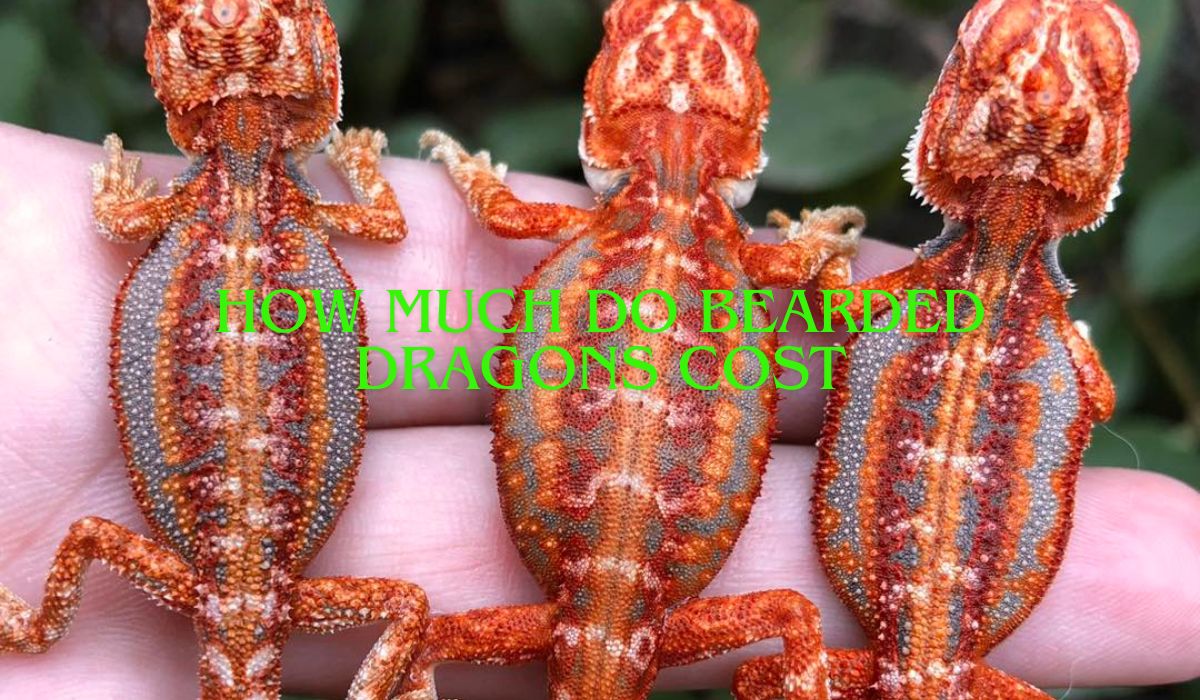
Introduction:
Bearded dragons are fascinating reptiles that have gained popularity as pets due to their docile nature and unique appearance. If you’re considering adding one of these scaly companions to your family, one of the first questions you may have is, “How much do bearded dragons cost?” In this comprehensive guide, we’ll delve into all the factors that contribute to the cost of owning a bearded dragon, from initial setup expenses to long-term care costs.
Chapter 1: Initial Purchase Price
When it comes to buying a bearded dragon, the cost can vary depending on factors such as age, morph, and where you purchase them from. Here’s a breakdown of what you can expect to pay:
- Hatchlings: Baby bearded dragons, or hatchlings, are typically the least expensive option, ranging from $20 to $100. However, keep in mind that younger dragons may require more specialized care.
- Juveniles: Juvenile bearded dragons, between 2 to 4 months old, may cost between $50 to $200, depending on their size and coloration.
- Adults: Adult bearded dragons, over a year old, can range from $100 to $500 or more, with factors such as gender, size, and color influencing the price.
- Morphs: Bearded dragons come in a variety of morphs, which are variations in color and pattern. Rare or high-demand morphs can fetch prices upwards of $1,000 or more.
Chapter 2: Habitat Setup Costs
Creating the perfect habitat for your bearded dragon is essential for their health and well-being. Here’s what you’ll need to consider in terms of setup costs:
- Enclosure: A suitable enclosure for a bearded dragon can range from $50 for a basic tank to $500 or more for a custom-built vivarium.
- Heating and Lighting: Proper heating and lighting are crucial for maintaining the right temperature and providing UVB exposure. Expect to spend around $50 to $200 on heat lamps, UVB bulbs, and fixtures.
- Substrate and Decor: Substrate, such as reptile carpet or tile, and decor items like rocks, branches, and hides, can add another $20 to $100 to your setup costs.
- Thermometers and Hygrometers: Accurate temperature and humidity monitoring are essential. Plan to spend around $20 to $50 on quality thermometers and hygrometers.
Chapter 3: Ongoing Care Expenses
Once you’ve set up your bearded dragon’s habitat, there are ongoing expenses to consider for their care and maintenance:
- Food: Bearded dragons require a varied diet consisting of live insects, fruits, and vegetables. Depending on the size of your dragon and the quality of the food, expect to spend around $20 to $50 per month on food.
- Veterinary Care: Routine veterinary check-ups and potential medical expenses should be factored into your budget. While the cost can vary, budgeting around $100 to $300 per year for vet expenses is a good starting point.
- Substrate Replacement: Substrate will need to be replaced regularly to maintain cleanliness and hygiene in your dragon’s enclosure. Budget around $20 to $50 per month for substrate replacement.
- Supplements: Calcium and vitamin supplements are essential for bearded dragons’ health. Plan to spend around $10 to $20 per month on supplements.
Chapter 4: Additional Expenses
In addition to the essential costs mentioned above, there are other potential expenses to consider:
- Enclosure Upgrades: As your bearded dragon grows, you may need to upgrade their enclosure to accommodate their size. Budget for potential enclosure upgrades down the line.
- Accessories: Additional accessories such as basking platforms, climbing structures, and enrichment toys can enhance your dragon’s habitat but will add to your expenses.
- Travel Costs: If you need to travel with your bearded dragon or board them while you’re away, factor in these additional expenses.
- You may also like: Revealing the Enigma of Ovestæ: Delving into the Secrets Behind This Intriguing Locale
Conclusion
While the initial cost of purchasing a bearded dragon may vary depending on factors such as age and morph, it’s essential to consider the ongoing expenses associated with their care and maintenance. By budgeting for both the upfront and long-term costs, you can ensure that you provide your scaly friend with the best possible care without breaking the bank. So, if you’re ready to embark on the journey of owning a bearded dragon, remember to plan ahead and budget accordingly for a rewarding and fulfilling experience.
FAQS
- How much does a bearded dragon cost?
- The cost of a bearded dragon can vary depending on factors such as age, morph, and where you purchase them from. Hatchlings may range from $20 to $100, juveniles from $50 to $200, and adults from $100 to $500 or more. Rare morphs can fetch prices upwards of $1,000.
- What is the average setup cost for a bearded dragon habitat?
- The average setup cost for a bearded dragon habitat includes the enclosure, heating and lighting equipment, substrate, decor, and monitoring tools. Expect to spend between $200 to $800 or more depending on the size and complexity of the setup.
- How much do bearded dragon owners spend on food monthly?
- Bearded dragon owners typically spend around $20 to $50 per month on food for their pets. This includes live insects, fruits, and vegetables to provide a balanced diet for their reptile companions.
- What are the ongoing care expenses for bearded dragons?
- Ongoing care expenses for bearded dragons include food, veterinary care, substrate replacement, and supplements. Budgeting around $100 to $300 per year for vet expenses and $20 to $50 per month for food and substrate replacement is recommended.
- Are there any additional expenses associated with owning a bearded dragon?
- Yes, there can be additional expenses associated with owning a bearded dragon. These may include enclosure upgrades as the dragon grows, purchasing accessories such as basking platforms and enrichment toys, and potential travel costs if you need to transport or board your pet.
Pets and Animals
Unveiling the Mysteries of Autoba Costimacula: A Comprehensive Overview
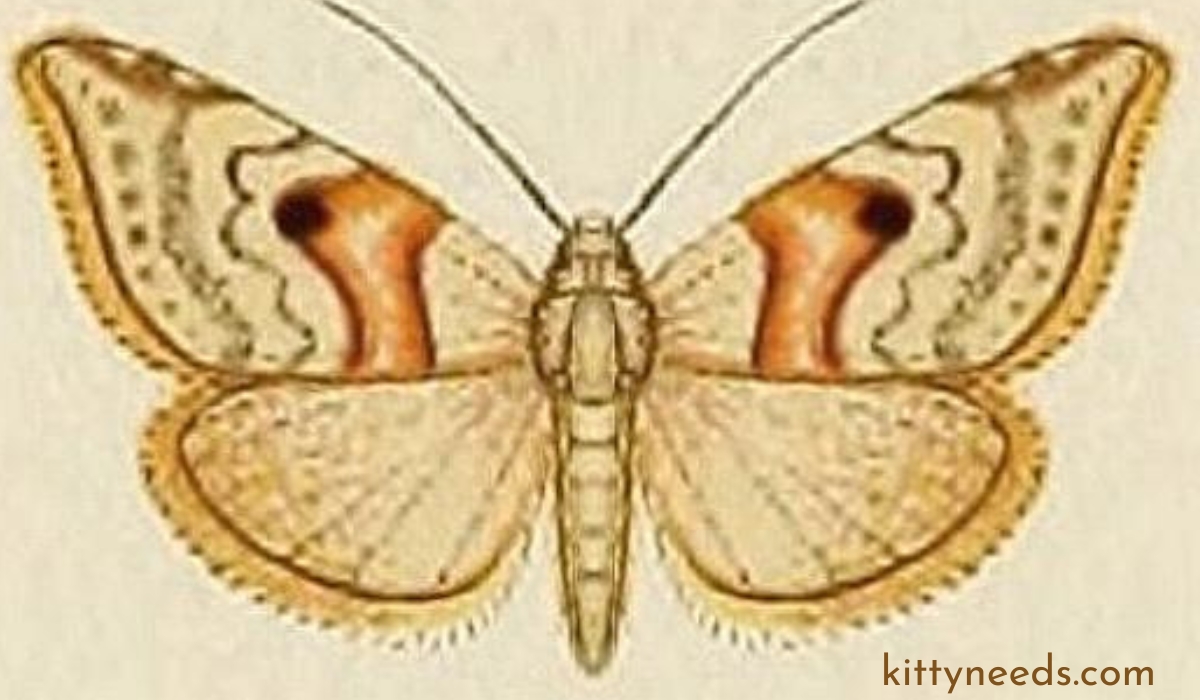
In the twilight regions of entomological study, where the fine threads of life weave intricate patterns of biodiversity, the Autoba costimacula emerges as a jewel in the tapestry of the natural world. This moth species is a creature of both elegance and ecological significance, a fact often lost in the greater mosaic of biota. In this comprehensive exploration, we will unfold the story of Autoba costimacula—tracing its taxonomy, morphology, and ecological impact with the keen eye of naturalists. Our narrative aims to not only shed light on the enigmatic moth but to underline the importance of its existence in the grand narrative of life on Earth.
Overview of Autoba Costimacula
The Autoba costimacula, a species of moth classified under the family Erebidae, boasts a rich history intricately interwoven with its ecological role. With a wingspan of approximately 14 millimeters, which gives it an almost ethereal presence, this moth species engages in a ballet of survival and predation unique to its being. Discovered by the German lepidopterist Max Saalmüller in 1880, its name echoes through scientific literature, albeit akin to a whisper amidst the cacophony of better-known fauna.
Significance in the Erebidae Family
The family Erebidae is host to a rich variety of moth species inhabiting diverse ecosystems across the globe. Autoba costimacula, among its fellow kin, represents the subtler players in its family. Yet, its contribution to the larger ecosystem is irreplaceable, and the preservation of this and other moth species is crucial in maintaining the complex web of life.
Brief History of Discovery
Max Saalmüller’s encounter with Autoba costimacula marked the beginning of formal recognition within entomology. Since then, glimpses of the moth have been shed through the taxonomic efforts of researchers around the world. Uncovering the species’ story demands a deep-dive into history, where its initial sighting was more than just a scientific notation—it was the birth of a cryptic legend.
Taxonomy and Classification
Beyond its aesthetic appeal, the scientific classification of Autoba costimacula provides a roadmap to understanding its place within the natural order.
Scientific Classification
- Kingdom: Animalia
- Phylum: Arthropoda
- Class: Insecta
- Order: Lepidoptera
- Family: Erebidae
- Genus: Autoba
- Species: Costimacula
Subspecies and Distribution
Autoba costimacula is not a homogeneous species. It encompasses several subspecies, each adapted to specific environs. We will explore the nuances that distinguish these subspecies and how they manifest in geographical distribution.
Comparison with Other Autoba Species
Within the Autoba genus lies a taxonomy of diverse moths, each with its own array of traits. By juxtaposing Autoba costimacula with its closest relatives, we can illuminate the unique characteristics that define and differentiate.
Morphology
In the realm of visual appeal, Autoba costimacula is a muse to photographers and a point of fascination for those appreciative of natural aesthetics.
Detailed Description
A meticulous description of the moth’s adult form, from color patterns to appendages, allows readers to envision its presence.
Unique Features of the Wingspan
With a wingspan that belies its stature, Autoba costimacula’s intricate wing patterns are more than just an ornate adornment—they are a testament to the millennia of evolutionary fine-tuning.
The Larval Stage and Predator Behavior
The rich and often overlooked narrative of Autoba costimacula unfurls most vividly in its larvae—a stage of life that predates its aerial dance.
Predatory Behavior on Coccoidea
A predator of Coccoidea—scale insects—Autoba costimacula larvae are efficient hunters in their own right, fitting for a moth species inhabiting a continent characterized by its diverse and unique insect life.
Habitat and Distribution
The moth’s presence on the African continent and beyond will be charted, underscoring the adaptability and resilience required to survive in vastly differing landscapes.
Presence in Southern and Eastern Africa
Detailed information about the specific regions of Africa where Autoba costimacula thrives, including any unique dependencies on its environment.
Adaptation to Islands in the Indian Ocean and Yemen
The not-so-secret life of Autoba costimacula on islands surrounding Africa provides a lens through which to study the species’ adaptability and the impact of isolation on its evolution.
Environmental Factors Influencing Distribution
Exploring the delicate balance of environmental factors that shape Autoba costimacula’s distribution highlights the fragility of ecosystems and the need for conservation efforts to promote their stability.
Ecological Role
For every species, there is a role to be played in the theater of nature. Autoba costimacula, with its subtle yet significant part, weaves a necessary thread in the intricate balance of insect populations.
Predatory Larvae and Insect Population Control
The cascading effects of Autoba costimacula’s predatory larvae on insect communities offer insights into the management of pest populations and the services provided by these natural predators.
Interaction with Other Species
The interconnectedness of Autoba costimacula with other species within its habitat illuminates complex relationships that warrant preservation and understanding.
Conservation Status
The tenuous position of many moth species, including Autoba costimacula, underlines the urgency of conservation efforts.
Research and Conservation Initiatives
Current research initiatives provide hope, steering efforts towards the protection of Autoba costimacula and its ilk.
Threats and Protection Measures
Highlighting the specific threats to the species and the strategies employed to safeguard its continued existence sheds light on the broader problems facing moth populations worldwide.
Importance of Biodiversity and Moth Preservation
The broader context of biodiversity conservation underscores the importance of protecting even the most understated species like Autoba costimacula.
YOU MAY ALSO LIKE
How Many Legs Does a Caterpillar Have? Unveiling the Mysteries of Lepidoptera Locomotion
Conclusion
Surveying the vast expanse of Autoba costimacula’s world reveals a microcosm of life teeming with significance. It is more than just a moth; it is a mosaic piece that, when absent, leaves the ecological picture incomplete. This exploration is a call to observe, preserve, and appreciate the wondrous tapestry that is Earth’s biodiversity. In the conservation and study of Autoba costimacula, we are not merely analyzing a single species but are contributing to the broader understanding of what it means to cherish and protect the marvels that inhabit our planet.
Future Prospects
The work does not end with this comprehensive overview. Future prospects for the study and protection of Autoba costimacula call for ongoing initiatives, collaboration, and innovation. It beckons passionate scientists and enthusiasts alike to venture deeper into the world of moths and the vital role they play. Autoba costimacula is a mere cipher for countless other species—each with its own narrative deserving of attention and respect. It is in the collective stories and stewardship of these creatures that we secure a harmonious future for the planet and all its inhabitants, big and small.
Frequently Asked Questions (FAQs)
- What distinguishes Autoba costimacula from other Autoba species?
Autoba costimacula is unique due to its specific wing patterns and predatory behavior on Coccoidea during its larval stage, differentiating it from other species within the Autoba genus.
- Where can Autoba costimacula be found?
This species thrives in various regions of Africa, especially in the southern and eastern parts, and has adapted to life on islands in the Indian Ocean and Yemen.
- What is the ecological role of Autoba costimacula?
Autoba costimacula plays a crucial role in controlling insect populations, thanks to its predatory larvae, which help manage pest levels and maintain ecological balance.
- Why is conservation of Autoba costimacula important?
Conserving Autoba costimacula is vital for preserving biodiversity and the species’ unique ecological role, highlighting the need for targeted research and conservation initiatives.
- What are the main threats to Autoba costimacula?
The main threats include habitat destruction, climatic changes, and pollution, which underscore the importance of developing effective protection measures.
-

 Pets and Animals2 months ago
Pets and Animals2 months agoShovel Dog: Everything You Need to Know
-
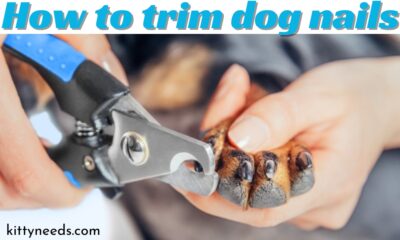
 Pets and Animals2 months ago
Pets and Animals2 months agoHow To Trim Dog Nails: A Step-by-Step Guide for Painless Pups and Peace of Mind
-
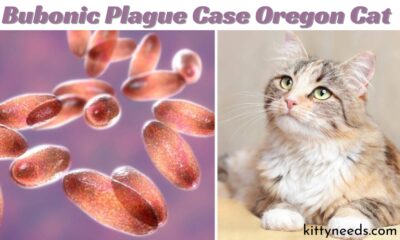
 Pets and Animals2 months ago
Pets and Animals2 months agoBubonic Plague case oregon cat: A Modern Tale of Medieval Disease
-
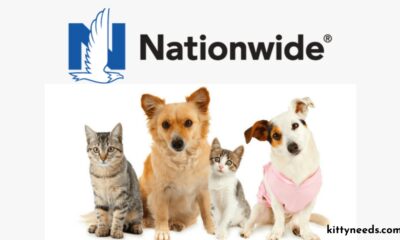
 Pet Care Guides2 months ago
Pet Care Guides2 months agoHere’s Why Nationwide Pet Insurance Should Be on Your Radar
-
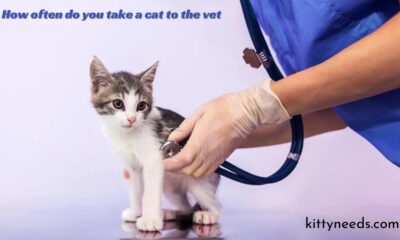
 Pets and Animals2 months ago
Pets and Animals2 months agoHow Often Do You Take A Cat to the Vet? A Guide for Caring Owners
-

 Pet Care Guides1 month ago
Pet Care Guides1 month agoGive a Loving Home: Adopt a Pet, Change a Life with Pet finder
-
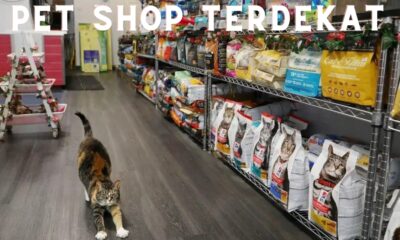
 Food and Equipments2 months ago
Food and Equipments2 months agoFinding the Perfect Pet Shop: A Guide to “Pet Shop Terdekat”
-
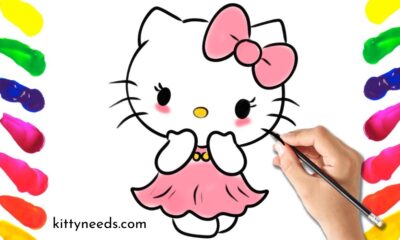
 Other2 months ago
Other2 months agoHow to Hello kitty drawing: A Step-by-Step Guide for Fans of All Ages
